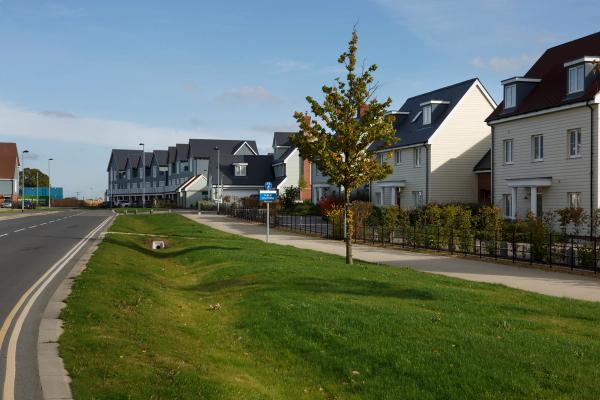New Housing Development
New development creates more demand for water. Runoff from new buildings, roads and other impermeable surfaces is also known to increase the likelihood of flooding, if unmanaged. In Essex, around 20% of the water quality issues recorded in our water bodies are linked to runoff from these sources too.
It is for local planning authorities, with their communities, to identify the strategic priorities for the development and use of land in their area. They must plan for these priorities accordingly within Local Plans, and must have regard to the National Planning Policy Framework. Local Plans are often supported by Water Cycle Studies and Strategic Flood Risk Assessments to gather evidence on local water pressures and potential solutions. Water companies also refer to Local Plans when planning for future water demands.
Each planning application is determined in consultation with key partners (statutory consultees). Essex County Council are a consultee who comment on drainage for a proposed new development. Essex County Council have produced a guide for implementing what are known as Sustainable Drainage Systems (SuDS), the Essex SuDS Design Guide.
A good SuDS system will hold storm water in the area where it has fallen, and by doing this, protect areas downstream from being flooded. The area where floodwater is stored can be a basin or pond. Not only do SuDS systems help manage flood risk, but they can also treat or clean built environment runoff before it returns into the natural water system. Features with reeds, vegetation and special materials filter out pollution and tiny invisible particles, cleaning the water as it flows through them. They are fantastic for nature and can look great too!
The video below shows how Southend on Sea Council have retrofitted SuDS, water efficiency and other sustainable measures to a property on Juniper Road, Leigh-on-Sea.
Watch this video where the Council invites public to explore innovative eco-friendly retrofit house:
As well as the Essex SuDS Design Guide, Essex County Council also have an award-winning Green Infrastructure Standards. Here is a complete showcase of the standards, or you can watch great examples of SuDS and Green Infrastructure in practice below.
Watch this case study about Temple Farm and Basildon Hospital:
Natural England issued new advice in 2022 for 31 habitat sites, which affected 27 river catchments and a total of 74 local planning authorities. The advice said that these sites are in unfavourable condition due to excess nutrient pollution in water bodies, and that new development applications may only be approved if the increase in nutrient loads caused by the development are treated or offset by nutrient savings of an equivalent amount nearby.
It was proposed that Natural England would review proposed mitigation projects, and then providing developers with a certificate to submit to their planning authority to accompany their application before proceeding. Further information on tackling nutrient pollution from new development is detailed in the Nutrient pollution: reducing the impact on protected sites policy.



